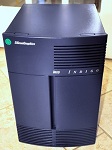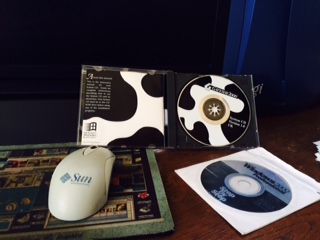Yole, my memory is fading somewhat.
I'm right now, putting together an old 586 PC.
The specs so far..
2GB Disk drive IDE
Zip Drive IDE
Floppy
CD Rom IDE
Colorado 5GB HP Drive (hopefully).
Memory 128MB (I think this is enough?)
Video S2 something
Also has an ISA network card.
Hopefully I will have a £3 Sound blaster (if I win today).
So first off, I'm currently using it for Word Rescue on PC Dos (my son). and obviously there is the 640kb restriction + What extended it allows me.
I may fancy popping OS/2 4 on it, if I can find he disks.
The specs seem fine? I can't recall what was good in those days, OS/2 4 recommends about 16MB of RAM
Question, The Colorado drive is IDE, but the BIOS is complaining it's not ATAPI compatible. Would this actually register in the BIOS? I pop a tape a tape in and it makes hard assed super noises, but not sure how I'm going to get this recognized. The Master/Slave settings are correct.
AND IT HAS A WINDOWS 'ME' BADGE ON THE FRONT!!!!
I'm right now, putting together an old 586 PC.
The specs so far..
2GB Disk drive IDE
Zip Drive IDE
Floppy
CD Rom IDE
Colorado 5GB HP Drive (hopefully).
Memory 128MB (I think this is enough?)
Video S2 something
Also has an ISA network card.
Hopefully I will have a £3 Sound blaster (if I win today).
So first off, I'm currently using it for Word Rescue on PC Dos (my son). and obviously there is the 640kb restriction + What extended it allows me.
I may fancy popping OS/2 4 on it, if I can find he disks.
The specs seem fine? I can't recall what was good in those days, OS/2 4 recommends about 16MB of RAM
Question, The Colorado drive is IDE, but the BIOS is complaining it's not ATAPI compatible. Would this actually register in the BIOS? I pop a tape a tape in and it makes hard assed super noises, but not sure how I'm going to get this recognized. The Master/Slave settings are correct.
AND IT HAS A WINDOWS 'ME' BADGE ON THE FRONT!!!!
-----------------------------------------------------------------------
Hey Ho! Pip & Dandy!



 loft =>
loft =>





Hey Ho! Pip & Dandy!



 loft =>
loft =>













 Has everything you need, nfs and tcpip and smb and all that.
Has everything you need, nfs and tcpip and smb and all that.


 BIOS update ?
BIOS update ?









